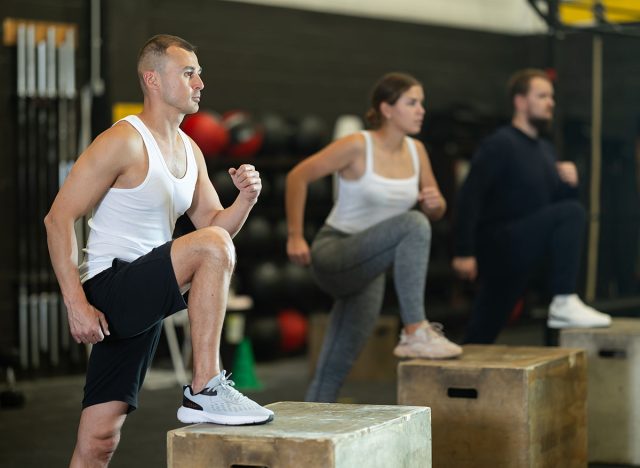If You Can Do This Many Step-Ups in 60 Seconds After 50, Your Cardio Is Top-Tier

Step-ups may look basic, but they’re one of the clearest signs of how strong and efficient your body still is. This single move combines leg power, coordination, and cardiovascular endurance, all the ingredients that keep you youthful after 50. Each repetition forces your heart and lungs to work in sync while your muscles stabilize your balance and drive you upward. How many you can complete in a minute says everything about your fitness, stamina, and resilience.
After 50, your body’s ability to recover and sustain effort becomes the real test of fitness. Step-ups demand that your cardiovascular system deliver oxygen efficiently while your lower body powers through continuous effort. The movement mimics real life, climbing stairs, walking hills, and staying active without fatigue. Performing them well means your heart, lungs, and muscles remain responsive and strong.
This challenge goes beyond counting reps, it measures how well your body manages intensity and recovery in real time. When done consistently, step-ups improve your conditioning faster than most cardio machines. They build a younger, more capable body that moves with energy and control, not strain.
How Many Step-Ups Show Top-Tier Cardio After 50
If you can complete 35 to 40 step-ups in 60 seconds, your cardio fitness is strong for your age. That range shows your heart rate rises and stabilizes efficiently, and your legs maintain steady power throughout the test. Finishing 45 to 50 step-ups means your conditioning is exceptional, placing you among the fittest 10% of adults your age. Hitting 25 to 30 step-ups with a consistent pace still marks solid aerobic health, especially if done with full control.
The key is to maintain rhythm rather than rush through reps. Each step should feel deliberate, with both feet landing fully before switching sides. Steady breathing, inhale on the step up, exhale on the way down, keeps your heart rate from spiking too early. The more you sustain that smooth cadence, the better your cardiovascular endurance truly is.
What Your Results Reveal About Your Health

Your performance during step-ups directly reflects how efficiently your body moves oxygen and fuel through your system. Strong results mean your heart pumps powerfully, your lungs deliver oxygen smoothly, and your muscles use energy with precision. That balance represents youth in motion, a cardiovascular system that’s conditioned, adaptable, and resilient under pressure.
If fatigue hits early, that’s simply your body signaling a need to rebuild endurance and strength. Cardio health declines gradually, but it also rebounds quickly when challenged. Training with step-ups retrains your heart and lungs to handle longer effort without strain. The better your results, the more your cardiovascular system mirrors someone 10 or even 20 years younger.
How to Improve Your Step-Up Performance

Start by finding a stable surface, such as a low step, bench, or sturdy box around knee height. Step up with one foot, drive through your heel, and bring your other foot to meet it at the top. Step down with control, alternating lead legs every time. Maintain a steady rhythm, using your arms naturally for balance.
To build strength and stamina, perform three to four 60-second rounds with 30 seconds of rest between. Gradually increase your total reps week by week, aiming for smoother transitions and shorter recovery times. Add light dumbbells or a weighted vest once bodyweight step-ups feel too easy. With consistency, your heart rate steadies faster, your breathing sharpens, and your endurance climbs, proof your cardio fitness remains top-tier after 50.